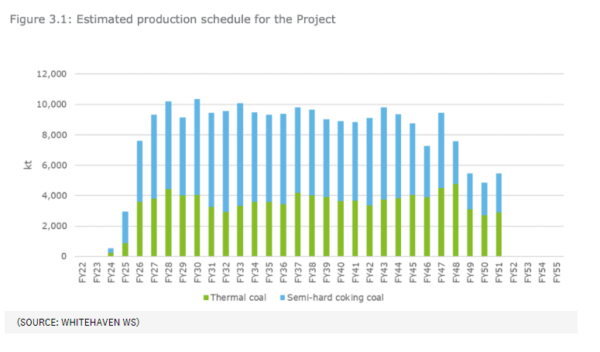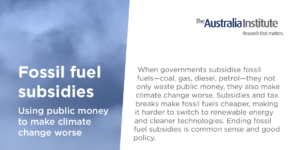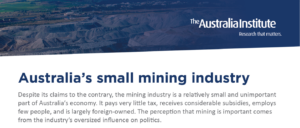Some critics argue we should lay off metallurgical coalmines because they’re used for steel, not energy. But that ignores the big picture.
Because of the climate crisis, governments shouldn’t be approving new coalmines. Doesn’t seem like a controversial thing to say, does it? At the Australia Institute, we’ve been saying it since at least 2015.
Yet eight years later, we still get social media “experts” and the occasional piece here in Crikey breaking the news that coal gets used to — drumroll — make steel.
This is, of course, correct. Coal gets used for two main things: generating electricity and making steel. Our old friends at the Minerals Council have a good explainer, but here’s what happens in a nutshell:
- Electricity: coal is burned to heat water into steam. The steam turns a turbine, generating electricity.
- Steel: coal is subjected to very high temperatures and turned into a near-pure carbon product called coke. Coke gets burned in a furnace with iron ore to achieve very high temperatures, creating a liquid metal and removing oxygen from the iron ore. This is important for strengthening steel.
Renewable energy is already replacing coal for electricity generation, but the decarbonisation of steel is less advanced. Because of this, our critics suggest, we should lay off new metallurgical coal mines.
This is wrong. Let’s examine the ways.
The climate doesn’t care
All kinds of coal are fossilised carbon that has been safely stored underground for millions of years. Digging up and burning it means that it will enter the atmosphere and contribute to climate change.
Enough already!
Australia supplies 61% of the world’s traded metallurgical coal and Queensland’s existing mines have huge reserves that will last for a long time. BHP claims its mines will operate for decades — Saraji has approval to 2044, Caval Ridge to 2056 and Peak Downs is currently applying to extend until, wait for it, the year 2119.
It’s not easy being green steel
Or at least it is not yet cheap. Greener approaches to steel exist, like electric arc furnaces and the replacement of coal in blast furnaces with hydrogen and other chemicals. This is already happening; Sweden is going hard at it. But it doesn’t help when a significant supplier like Australia expands its metallurgical coal supply, making dirty steelmaking cheaper and reducing incentives to switch to cleaner methods.
Coal doesn’t come pre-sorted
Coal doesn’t emerge from the ground in batches neatly labelled “metallurgical” and “thermal”. It has a range of properties such as moisture, carbon content, coking properties, ash content (junk), etc, and these specifications vary between mines and even between different parts of the same mine. As a result, most coal mines dig up some coal that is sold as thermal coal and some that is sold for steelmaking.
There are few mines that see 100% of their production used to make steel. According to Queensland government statistics, the state has 63 coalmines that have operated between 2015 and 2021. Only 16 claim to have produced 100% metallurgical coal, and a further 11 over 90%. Similar statistics aren’t available for NSW, but it is unlikely that any mines in the state, and certainly not in the Hunter Valley or northwest of the state, produce only steelmaking coal.
Often mines are presented as being only coking coal, when in fact they produce large amounts of thermal coal. For example, in the media and according to lobbyists, Whitehaven’s Winchester proposal in Queensland is “for steel production”, and is expected to “produce up to 11 million tonnes per annum of primarily high-quality metallurgical coal for steel manufacturing over a 30-year mine life”.
But when you look up the finer details, almost half of its production is thermal coal:

Who would have thought that coal lobbyists might be loose with the details, particularly as banks are becoming reluctant to lend money to thermal coal mines?
As the Institute for Energy Economics and Financial Analysis puts it:
“Australian thermal coalmine developers often suggest that a percentage of their proposed product will be sold as [metallurgical] coal, despite there being no certainty that any output from a proposed mine will be sold into the metallurgical coal market.
With an increasing number of banks and other financial institutions ending their financing of thermal coal, it is useful to thermal coal miners to suggest that new mine developments will produce metallurgical, as well as thermal, coal.”
Staying with our Winchester example above, not only would this “metallurgical coalmine” actually produce large volumes of thermal coal, but the metallurgical coal it would produce is “semi-hard”, which means it is only “semi-good”. Many Australian mines, particularly in NSW, produce “semi-soft” coking coal, which is lower grade still.
An even lower grade of metallurgical coal is pulverised coal injection (PCI) coal, which, to quote the Minerals Council, is “basically high-quality thermal coal”. Despite this, plenty of mines that only produce PCI are spun as exclusively steelmaking mines.
PCI can be used for steelmaking and doing so is “significantly cheaper than coke and is therefore an economical replacement for coke” (still Minerals Council). The problem is that PCI is potentially displacing the high-quality coking coals that the Minerals Council likes to claim “maximise productivity and reduce the amount of CO2 produced”. To spell it out: some Australian metallurgical coal is very low grade and is used to displace higher grade (possibly Australian) coal, making steelmaking dirtier.
If Australian governments, industry and their supporters were serious about climate change and steel supply, there is plenty they could do. They could specify that Australia’s coal exports only be used for steelmaking, just as they specify that the country’s uranium is only to be used for peaceful purposes.
Better still, they could reduce demand for steel. Modern wooden buildings, which can be more than 100 metres high, use almost no steel. Serious investment in public and passive transport would reduce the number of cars bought, one of the key markets for steel.
And, of course, they could place a moratorium on new coalmines. Not on thermal coalmines, not on semi-something coalmines. No. New. Coalmines.
Between the Lines Newsletter
The biggest stories and the best analysis from the team at the Australia Institute, delivered to your inbox every fortnight.
You might also like
Should Australia ban fossil fuel advertising?
A tobacco-style ban on fossil fuel advertising would be a decisive win for Australia – and the climate.
Fossil fuel subsidies
When governments subsidise fossil fuels—coal, gas, diesel, petrol—they not only waste public money, they also make climate change worse. Subsidies and tax breaks make fossil fuels cheaper, making it harder to switch to renewable energy and cleaner technologies. Ending fossil fuel subsidies is common sense and good policy.
Australia’s small mining industry
Despite its claims to the contrary, the mining industry is a relatively small and unimportant part of Australia’s economy. It pays very little tax, receives considerable subsidies, employs few people, and is largely foreign-owned.


